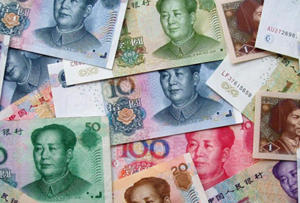FT Alphaville and Michael Pettis had the story in the spring: Chinese companies would obtain trade finance to purchase copper abroad, warehouse it, and use the inventory as collateral to obtain letters of credit on Chinese banks, which could be used to fund investments totally unrelated to copper. Goldman says the authorities have cracked down on this scheme, as does Pettis.
On its surface the scheme seems to be just another way to access credit in a constrained financial system, a spigot that has now been sealed off. The urgency of the situation thus removed, it is worth giving this a deeper read.
The fact that the scheme made use of copper, a fungible, storable coinage metal, is suggestive. The suggestion is amplified by what appeared to be round-trip importing and re-exporting of copper to and from Shanghai. Pettis speculated in his May 1 newsletter:
Even when London [copper] prices are above Shanghai prices, companies eager for loans are importing copper in order to get back-door financing, whereas local traders, noticing that domestic demand isn’t strong enough to justify those import quantities, and perhaps eager to arbitrage the prices, are selling copper abroad. The weird distortions in the banking system, where credit isn’t rationed by price but by quantity and hierarchy, has turned China, at least temporarily, into a revolving door for copper imports and exports.
I couldn’t help but think of gold points, the deviation in exchange rates under a gold standard at which it becomes profitable to ship gold across the ocean. Under such a system, one unit of each country’s currency buys a fixed amount of gold. When the exchange rate between, say, the gold-backed pound and the gold-backed dollar gets out of line, you can buy gold with dollars (say), ship it across the ocean, sell it for pounds, and convert back to more dollars than you started with. As long as gold can be safely shipped, the existence of this arbitrage prevents exchange rates from moving much outside of the gold points, and limits the amount of gold that is actually shipped across the ocean.
While copper financing was going strong, the metal traded at two prices: the inflated London price reflected the credit demand for copper, while the lower Shanghai price reflected speculative or industrial demand. Collateral copper had to be bought in London because that’s where trade finance was available. The round-trip exports would have continued until the prices made it unprofitable.
In a sense, then, the two prices reflect a kind of misaligment in exchange rates. In the face of high credit demand in a constrained financial system, the market was seeking funds abroad, by making its own money. It is global imbalances writ small—China’s exchange-rate policy leads to overinvestment, which needs credit. Credit clampdowns lead borrowers to find other sources of funds, including international borrowing against copper. The imbalances play out as price distortions and redundant commodity flows.
The whole phenomenon underscores the difficulty Chinese policy-makers face. In our recent conversation, Victor Shih noted the tension between China’s open current and closed capital accounts. In his paper, import overinvoicing is a way for wealthy households to move funds out of the country.
Copper financing exploited another loophole: copper is an industrial good, which flows easily through the open current account, but it is also a plausible store of value, since it is fungible and storable and trades in a liquid market. Buying copper, that is, is not so different from obtaining a foreign deposit.
Chinese companies continue to demand liquidity because they continue to want to invest. Reserve requirements and interest rates have tightened monetary conditions within the regulated banking sector. Rather than dampening investment, however, these policies have simply moved credit off of banks’ balance sheets and into the shadows. The copper spigot may have closed, but 9% GDP growth, driven by investment spending, continues apace. So another spigot is open, somewhere.




